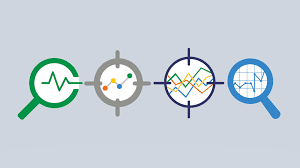What is Forecasting?
Across industry verticals, all businesses face the challenge of preparing for an uncertain future. Corporate executives are responsible for the planning and allocation of resources to optimize growth and meet the demands of the business, a task that grows in difficulty with an increasingly complex business environment.
To help generate accurate predictions of what will happen in the future, and to support the informed and effective allocation of resources, executives use a data analysis technique known as forecasting.
Forecasting uses current and historical data as the basis for predictions about future events. There are three types of forecasting that are commonly used to make predictions about the future in a business context:
General Business Forecasting
Forecasting can be used to assess market conditions and to quantify the health and value of a target market. Organizations may attempt to estimate future sales, expenditures, profits, and liabilities. They may also attempt to measure or evaluate economic trends and position themselves to take advantage of anticipated marketing opportunities. General business forecasting can leverage historical data, or it can be based on intuition or qualitative analysis.
Sales & Marketing Forecasting
Sales and marketing represent two sources of revenue for the business. The sales team produces revenue with outbound efforts to connect with potential customers, while the role of marketing is to engage audiences with content, targeted advertising and other initiatives that generate inbound leads. Forecasting sales and marketing revenue is a crucial capability for organizations that feed directly into internal budgeting and resource allocation planning.
Capital Forecasting
Capital forecasting is simply financial planning for businesses. A business uses capital forecasting to anticipate its future revenue (based on anticipated revenue from sales, marketing, and other revenue streams), ensure that it can meet upcoming financial liabilities and to optimize investment in growth. Capital forecasting helps organizations optimize their resource allocation and accelerate growth while ensuring appropriate cash flow management.

Why is Forecasting Marketing Revenue Important?
As an organization grows in size and invests in marketing its products and services, forecasting plays an increasing role in ensuring that resources are effectively allocated for the future. The ability to correctly forecast marketing revenue and success yields several positive benefits for the business:
Forecasting Helps Ensure Effective Resource Allocation
Businesses need to know how many sales they are likely to generate in a given time period to ensure that they are positioned to meet customer expectations for quality and service.
If your company manufactures widgets, the ability to forecast marketing outcomes will help you determine how many widgets you should make. If you sell a service, forecasting can help you determine what resources are needed to deliver the services that you will sell.
Forecasting Helps Drive Effective Budgeting
The ability to forecast marketing outcomes can help your business determine how your revenue will grow or change in a given time period.
This feeds into cash flow projections that can help you budget effectively to drive growth. To optimize capital utilization and avoid cash flow issues, businesses must do their best to predict how much cash they will have available, and when.
Forecasting Helps Identify New Market Opportunities
Businesses don’t just market to new customers – they market to their existing customers too. Forecasting revenue from both new and existing customers can help businesses determine their customer life-long value (CLV), a useful metric for measuring marketing ROI and justifying investments in customer acquisition.
Understanding the purchasing behaviors of customers throughout the customer life cycle can help organizations identify new and lucrative market opportunities.

Three Methods of Forecasting for Business
There are three basic ways that businesses can conduct forecasting. The forecasting method chosen will depend on a variety of factors, the most important of which is the type of forecasting.
Qualitative forecasting
Qualitative forecasting is used to make predictions about the future when data is not readily available. A business may have to use qualitative forecasting when it has no data, such as when a product or service is very new.
Assessments of target market growth may also require elements of qualitative forecasting in cases where there is insufficient information available to build a reliable quantitative model.
Quantitative forecasting
Quantitative forecasting is used when there is historical or time-series data available that can be used to inform predictions.
For sales and marketing forecasting, organizations who track metrics and KPIs through the sales funnel can develop sophisticated forecasting and revenue models based on volumes at different stages of the sales cycle and knowledge of conversion rates. This data is analyzed for trends and patterns that help analysts predict future revenue and outcomes.
Causal modeling
Causal modeling is a sophisticated forecasting method that attempts to account for all of the causal factors that affect a given outcome. Causal models are complex and may be continuously refined as the business moves towards an accurate predictive model for a given area of investigation.
Forecasting always uses built-in assumptions that can skew results, but causal modeling addresses this by tracking assumptions in the model and validating them against new data.

6 Steps to Accurate Forecasting for Marketing Revenue
Marketing organizations are uniquely positioned to perform quantitative forecasting of marketing outcomes based on their visibility into early stages of the revenue cycle and familiarity with conversion modeling and optimization. Marketing revenue forecasts can be developed in a six-step process:
- Create a model of the revenue cycle or marketing funnel
- Identify marketing lead types and group them together based on their customer profile
- Measure conversion rates and velocity for each type of marketing lead
- Determine what counts as a lead and evaluate how many leads (of each type) are being fed into the marketing funnel (and at what stage)
- Based on the number of current and new leads, assess how many will be converted into revenue and how much revenue will be generated
- Apply best judgment and experience to arrive at a finalized revenue forecast for the specified time period

Directive Consulting Uses Data to Drive Accurate Forecasting
Directive Consulting leverages years of experience and data collection to accurately forecast the financial impacts of its marketing recommendations. Directive Consulting’s marketing analytics platform integrates fully into your existing CRM tool, helping your business extract and process the necessary data to develop your own marketing revenue forecasting and drive effective planning and business success.